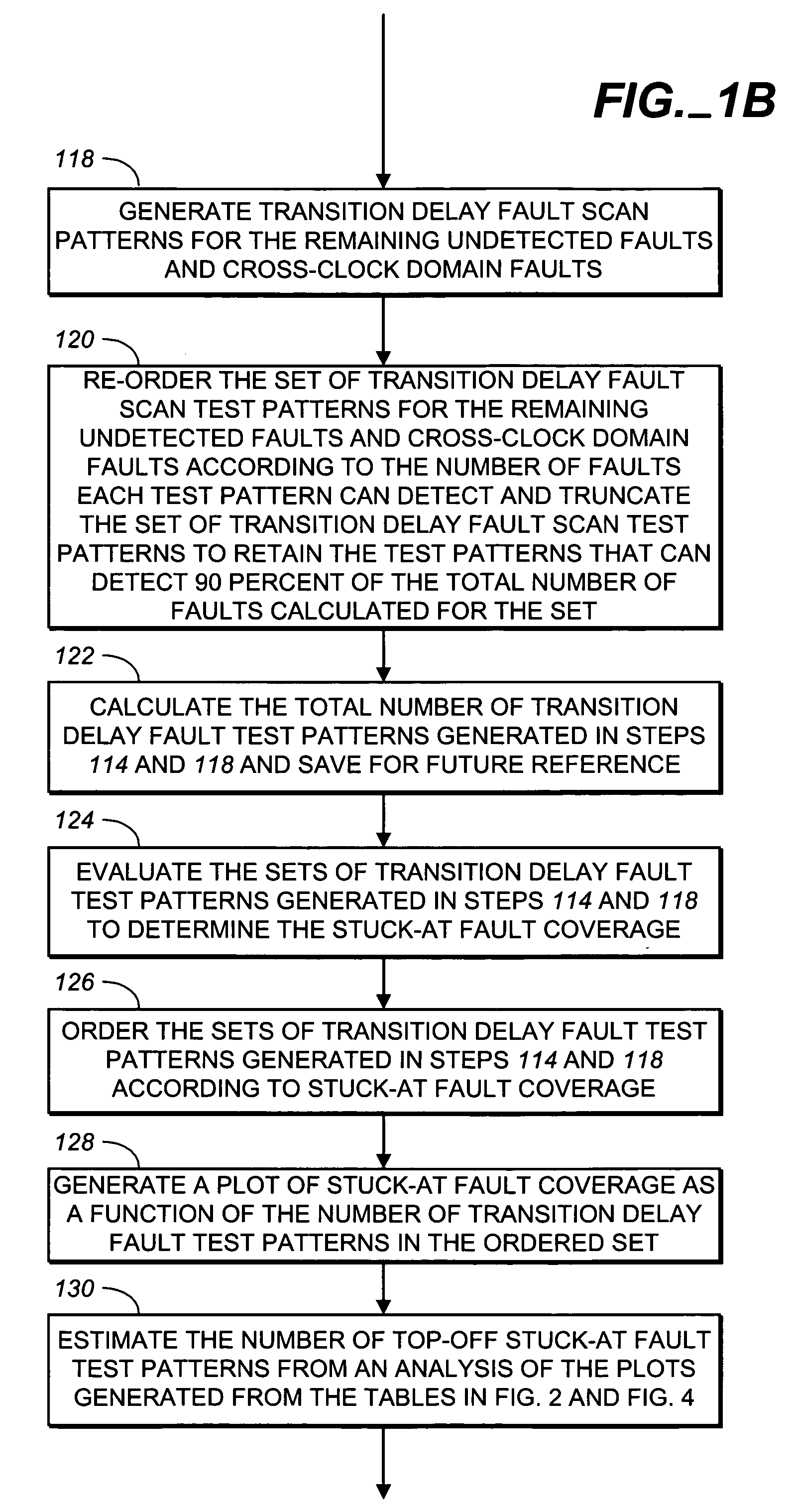Method of generating an efficient stuck-at fault and transition delay fault truncated scan test pattern for an integrated circuit design
a technology of integrated circuit design and scan pattern, which is applied in the direction of coding, instruments, code conversion, etc., can solve the problems of extra resources, added costs, and inapplicability of methods in some integrated circuit designs
- Summary
- Abstract
- Description
- Claims
- Application Information
AI Technical Summary
Benefits of technology
Problems solved by technology
Method used
Image
Examples
Embodiment Construction
[0024]Frequency dependent defects in integrated circuit die that result in severe timing failures are typically referred to as transition delay faults (TDF). Historically, transition delay faults have been screened using at-speed or high-speed functional testing of the die. Due to the cycle time required during the design phase, however, it is desirable to generate a screening method for transition delay faults using scan chains. The number of possible test patterns that may be used for both stuck-at fault (SAF) and transition delay fault (TDF) test patterns is determined by the size of the scan memory available in standard production testing equipment.
[0025]Transition delay fault test patterns also detect stuck-at faults. Accordingly, transition delay fault patterns are preferably generated first to detect both stuck-at faults and transition delay faults. The transition delay fault patterns may then be analyzed to determine the stuck-at fault coverage, and the remaining, or top-off...
PUM
 Login to View More
Login to View More Abstract
Description
Claims
Application Information
 Login to View More
Login to View More - R&D
- Intellectual Property
- Life Sciences
- Materials
- Tech Scout
- Unparalleled Data Quality
- Higher Quality Content
- 60% Fewer Hallucinations
Browse by: Latest US Patents, China's latest patents, Technical Efficacy Thesaurus, Application Domain, Technology Topic, Popular Technical Reports.
© 2025 PatSnap. All rights reserved.Legal|Privacy policy|Modern Slavery Act Transparency Statement|Sitemap|About US| Contact US: help@patsnap.com



